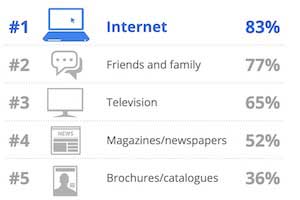Baby Boomers and seniors now spend more time online than watching television, according to a report by Ipsos and Google.
On average, seniors and Boomers (defined in the report as those age 45 or older) spend 19 hours a week online, but they spend 16 hours watching television. Their online usage also far outpaces time spent listening to the radio and reading newspapers/magazines.
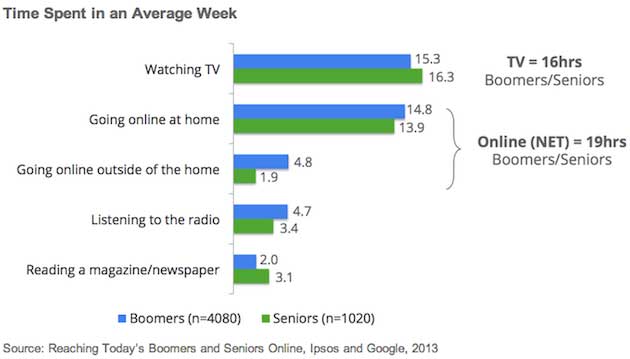
Below, additional key findings from the report, Reaching Today's Boomers and Seniors Online, which was based on an online survey of US adults.
Information-Gathering
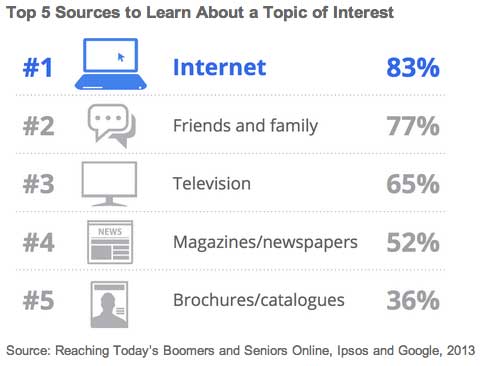
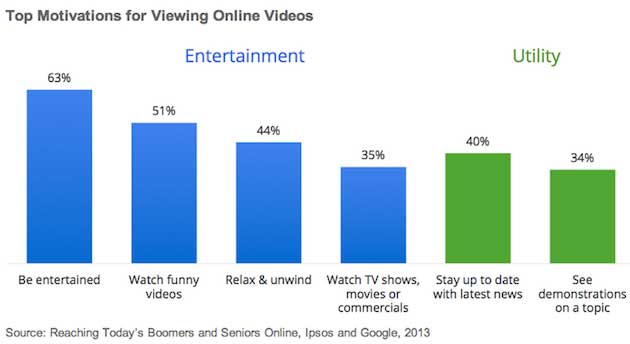
Social Networks
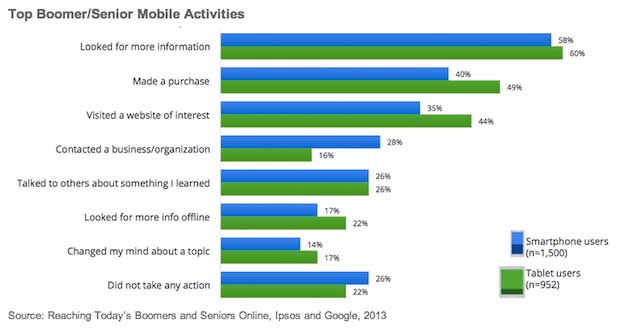
On average, seniors and Boomers (defined in the report as those age 45 or older) spend 19 hours a week online, but they spend 16 hours watching television. Their online usage also far outpaces time spent listening to the radio and reading newspapers/magazines.

Below, additional key findings from the report, Reaching Today's Boomers and Seniors Online, which was based on an online survey of US adults.
Information-Gathering
- The Internet is the top source for gathering information on topics of interest for Baby Boomers and seniors, outpacing television and print media by a substantial margin.

- News and weather is the most popular type of information accessed by Boomers and seniors online (66% accessed in the past month), followed by shopping (57%), coupons/discounts/daily deals (45%), food information (44%), and games (43%).
- 54% of Boomers/seniors watch online video, compared with 65% of the general population.
- YouTube is the most popular video site (used by 82% of Boomers/seniors), followed by Facebook (43%), Netflix (23%), and Hulu (23%).
- The top motivations for viewing online videos include being entertained (63% of respondents), watching funny videos (51%), relaxing (44%), and staying up to date with the latest news (40%).

Social Networks
- Facebook as the most used social network, with membership on par with that of the general population.
- Common activities seniors and Boomers engage in on social networks include following groups/organizations (55%), posting/watching videos (40%), supporting causes (26%), and joining groups (23%).
- Social networking sites are used by the majority of Boomers (71%) and seniors (59%) daily.
- Mobile usage is still developing among Boomers and seniors: 29% use a smartphone regularly (compared with 48% of the general population), and 19% regularly use a tablet (compared with 25% of the general population).
- Those who use mobile devices engage in a variety of activities, including looking for information, making purchases, and visiting websites of interest.

